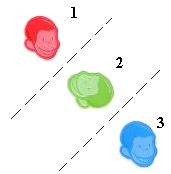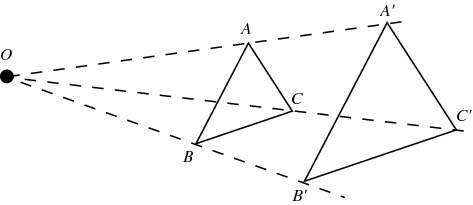- Rotation is when an image is rotated from one point with the same distance. So here are some rules when it comes to rotating.
- 90 degrees: (x,y) → (-y,x)
- 180 degrees: (x,y) → (-y,-x)
- 270 degrees: (x,y) → (y,-x)
- These rules are for counter-clockwise, except for 180 degrees. Now if a problem asks for clockwise, you should use the rule that is opposite. For example:
- If it says "90 degrees clockwise", you could use the rule for 270 degrees counter-clockwise.
- If it says "270 degrees clockwise", you could use the rule for 90 degrees counter-clockwise.
.gif) |
| This globe/earth is going 360 degrees counter-clockwise. |
- This is because if you look at a clock and try what a question is asking, it'll make sense. Just because if your going 90 degrees clockwise, it'll be the same as going 270 counter-clockwise. And if your going 180 degrees, it'll be the same either counter-clockwise or clockwise.
Now try it yourself !
↓















